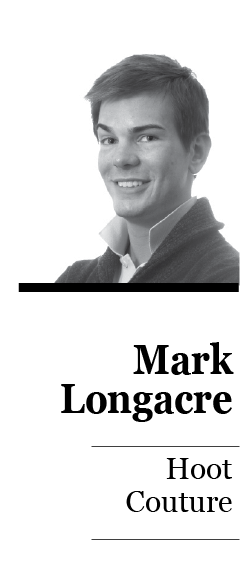Columnist Mark Longacre gives ways for students to help perserve the environment by pointing out which stores are “greener” than others.
As the trees begin to bloom and Temple students emerge from the confines of the TECH Center and dorms, it occurred to me that it’s actually nice spending time outside when North Philly isn’t a tundra. What’s better than inviting that special someone out to Beury Beach for a cold drink in the warm, blissful sunshine?
I’m not going to go all Al Gore on you, but there is something to be said about preserving the environment. Yeah, we all know that you can ditch the Range Rover for a Prius and get a reusable water bottle, but what about your wardrobe?

Because green is the new black, I thought it was important to show some of the many ways to revamp your wardrobe and still stay green. While it would be nice, we don’t want the ice caps to melt and make Beury a real beach.
Almost every retail outlet and department store publishes ways they are trying to stay green, so check out some of your favorite stores’ websites and see if they’re really doing their part to stay eco-friendly.
Being a Nordstrom devotee, I was pleasantly surprised with how it recycles old hangers and shipping materials, and how it shies away from hazardous chemicals whenever possible. I found the Nordstrom recycling profile almost instantly online, so don’t hesitate to search for others.
While you’re probably not going to wear organic cotton, you’re saving the environment from having hazardous chemicals contaminate a water supply – the pesticides used in cotton growth have been linked as causes of cancer.
If you’re not satisfied with your favorite store’s efforts to go green and want to go green on a budget, try shopping vintage where you’re likely to find something one-of-a-kind. Rather than buying something new, buy second-hand at Buffalo Exchange on 17th and Chestnut streets and put the money to a nice dinner in Rittenhouse Square with someone special or a close friend.
Sometimes it’s nice to treat yourself to the expensive pair of jeans calling your name, even though you really shouldn’t. Well, actually, you really should.
Lucky Brand, one of my favorite stores, launched a new line of selvedge denim, which allows them to use almost all of the fabric produced, and they are incredibly durable. Assuming you stay the same size, you won’t have to replace them for a while.
Higher-end denim stores that produce selvedge denim usually buy their supplies from and produce the jeans in the U.S. Lucky Brand’s selvedge line is domestically handcrafted, so the money you should be spending on books – but are spending on jeans – stays in the economy.
If you want to go all out with wearing green, without actually wearing all green, American Apparel prides itself in being one of the most ethical clothing companies around – something you don’t often see an industry based entirely on looks. It takes satisfaction in manufacturing all its clothing in downtown Los Angeles and not in sweatshops like some of its rivals.
Twenty percent of every garment from American Apparel is organic cotton, which doesn’t use harmful, cancer-causing pesticides, and it plans to switch its lines to 80 percent organic cotton in the near future. Because the clothing is so elegant in its simplicity, it is easy to pair with almost anything, and it is reasonably priced. Check out the store on 16th
and Chestnut streets to update your wardrobe with some spring looks without killing Mother Nature.
Next time you’re walking your little dog through Rittenhouse Square in the beautiful spring weather, or enjoying a hookah with friends by the Bell Tower, remember to do your part to keep Mother Nature verdant. Walk the extra foot to recycle your can, spend the extra couple dollars to buy organic cotton or take public transportation into the city instead of driving that gas-guzzler you love so much.
Going green doesn’t have to be a huge life change, but every added effort helps.
Mark Longacre can be reached at mark.longacre@temple.edu.



Be the first to comment